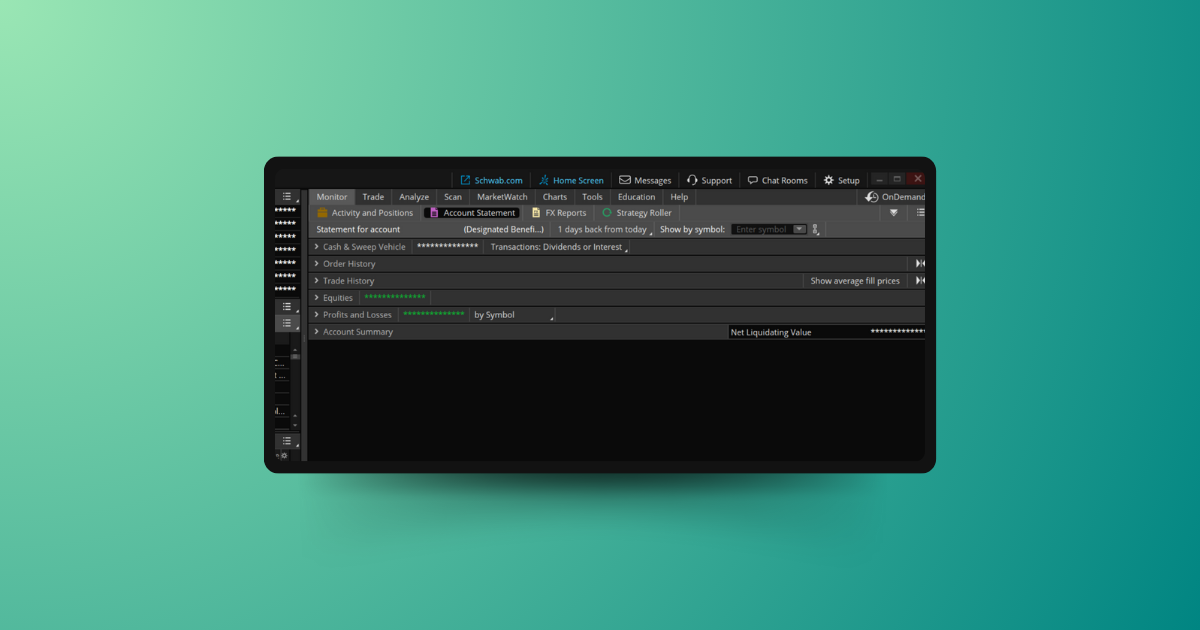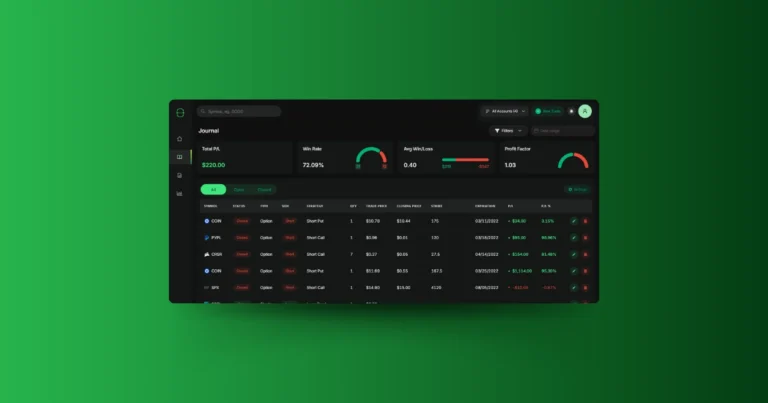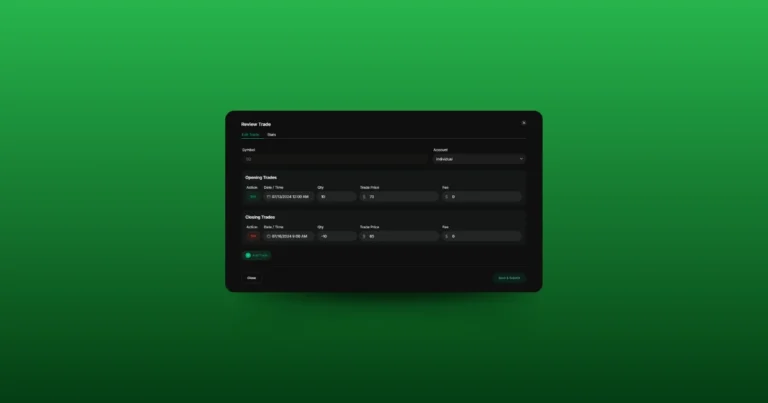If you’re looking to keep a close eye on your trading activity or just want a detailed record of your past trades, you’ll likely need to export your trading history at some point. The guide below will walk you through the process of finding and downloading your full trade history from the thinkorswim platform.
You’ll first need to navigate to the Monitor tab and then open the Account Statement page. This page will provide a detailed breakdown of your trading history, including all executed trades, orders, and account transactions. Typically, the page defaults to only showing data for the past day, but can be adjusted to showing up to one year of data.
- Trades: A list of all executed trades within the selected time frame.
- Orders: Details of placed orders, including those that are filled, canceled, or still open.
- Account Transactions: Information about deposits, withdrawals, and other financial transactions.
- Balances: Current account balances and positions.
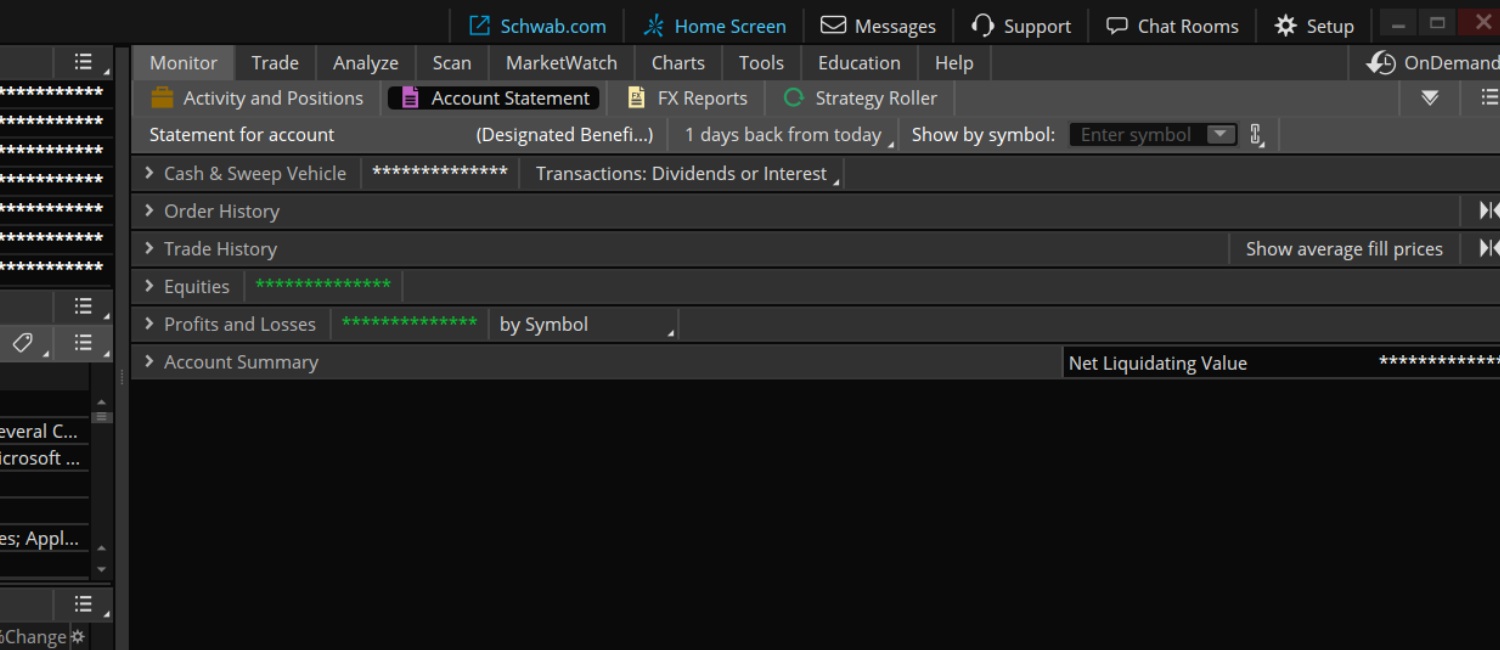
2. Select Time Frame
Before exporting, you’ll next need to adjust the time frame by using the selector towards the top of the page. The max is a years worth of data, so you may need to export several files to encompass your entire trade history. You’ll also want to ensure you have the correct account selected before moving to the next step.
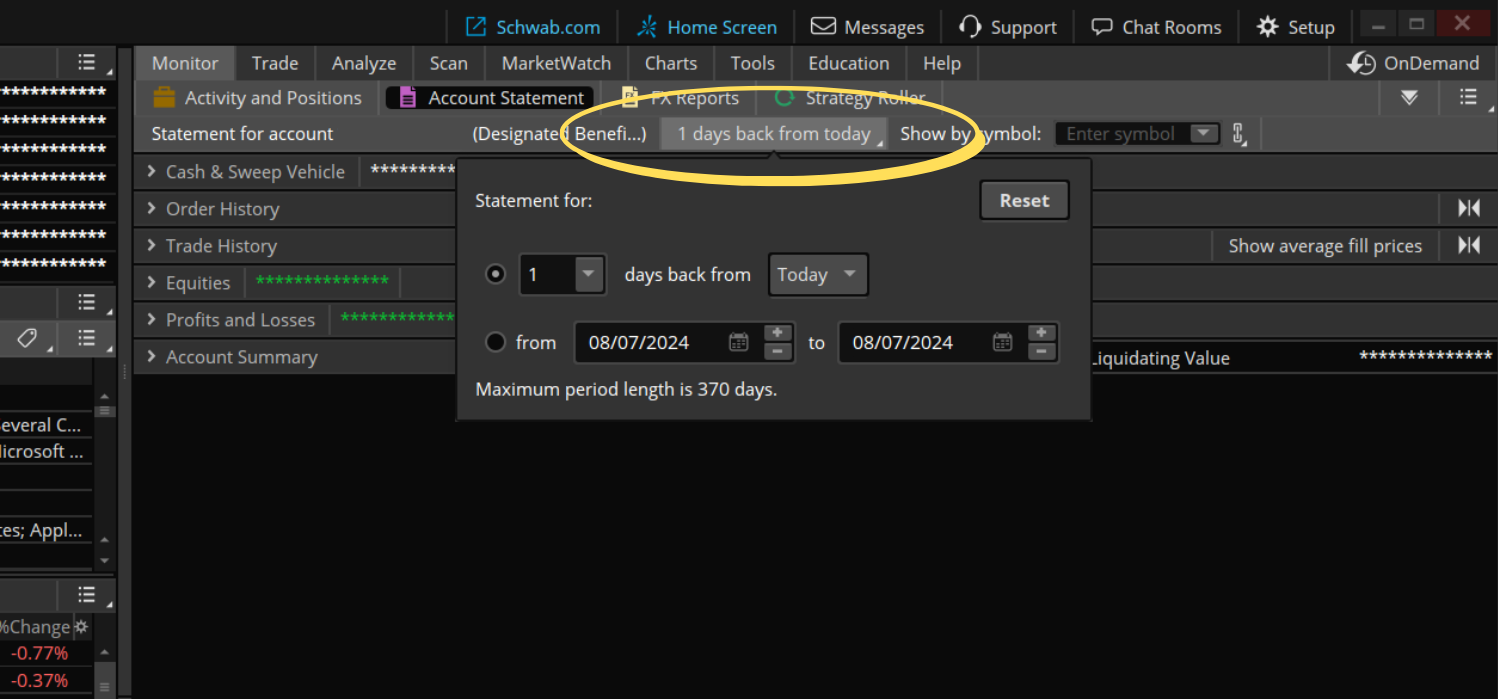
3. Export to File
After you’ve selected the time frame and account, you’ll then export by using the menu icon in the upper right hand corner of the account statement. Within the drop down menu you’ll then find and click the Export to file button. This will generate a csv file which can then be saved to your computer.
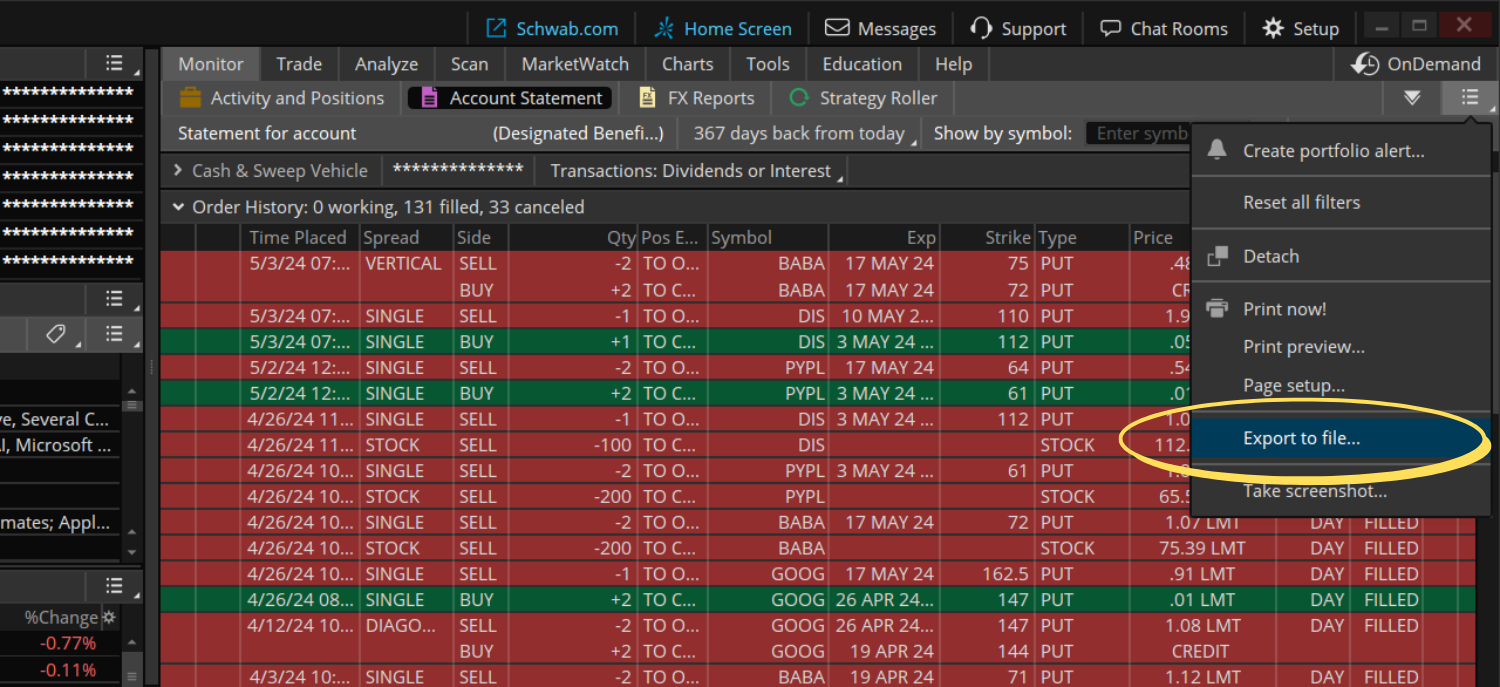
Important: Ensure that the following columns are included in your exported file: Exec Time, Spread, Side, Qty, Pos Effect, Symbol, Exp, Strike, Type, Price, and Net Price.
Importing Your Trades into TraderLog
Now that you’ve got your trade history saved, let’s walk through how to import those trades into TraderLog. Don’t worry, the process is super simple and user-friendly.
Step 1: Clicking the ‘New Trade’ Button
After logging into TraderLog, the first thing you’ll want to do is click the ‘New Trade’ button. You’ll find it in the top right corner of your dashboard. This is the same button you’d use if you were manually entering trades.
Once you click ‘New Trade,’ a new window will pop up. Here, you have two options: you can either manually input trade details or import your file. For the latter, simply find the ‘Upload File’ button in the window—this is where you’ll upload your CSV or Excel file. Go ahead and click that to continue.
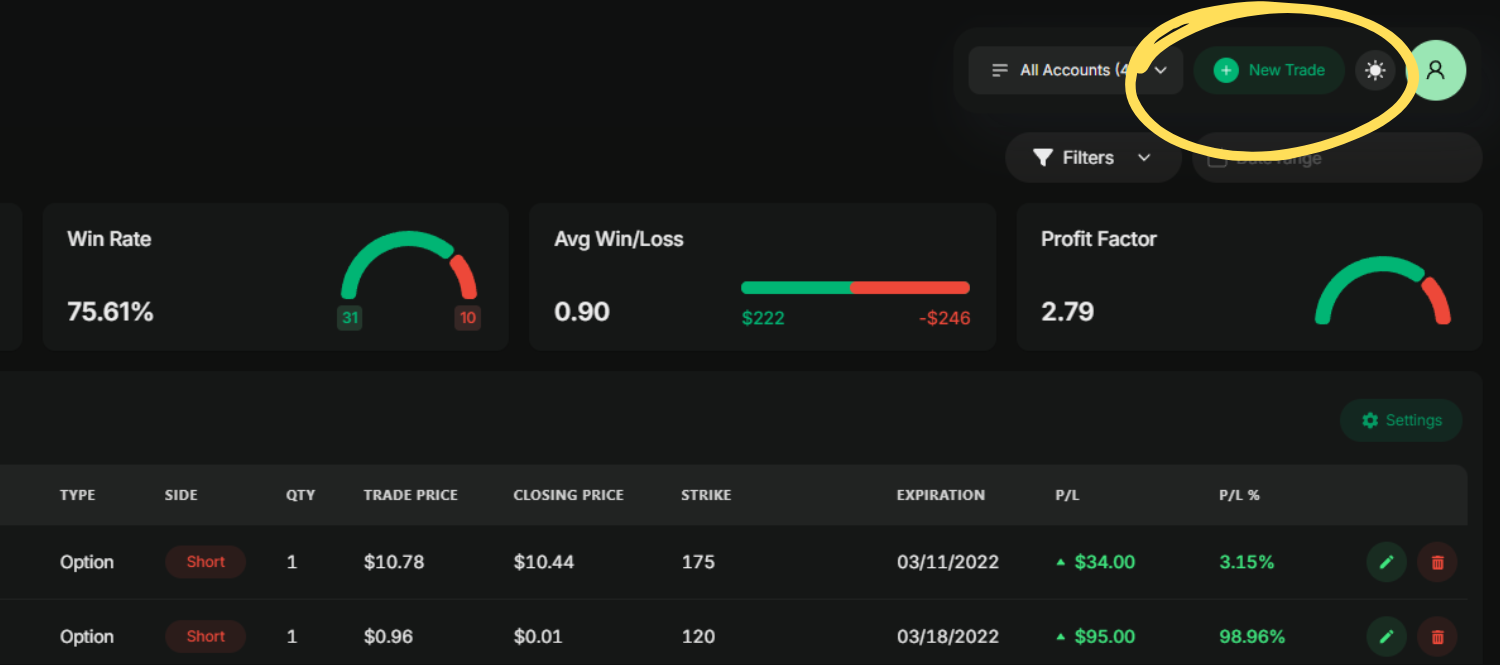
Step 2: Uploading Your Trade File
In the window that pops up, you’ll see an option labeled ‘Upload File’. This is where you’ll upload your CSV or Excel file that contains your trade history. Just click that button to move forward.
Next, you’ll be asked to select your broker from a dropdown list. TraderLog supports a bunch of brokers, so just make sure to pick the one that matches the statement you saved earlier.
If you’ve linked multiple trading accounts in TraderLog, you’ll also need to choose the correct account at this step. This ensures the trades are imported into the right account within the platform.
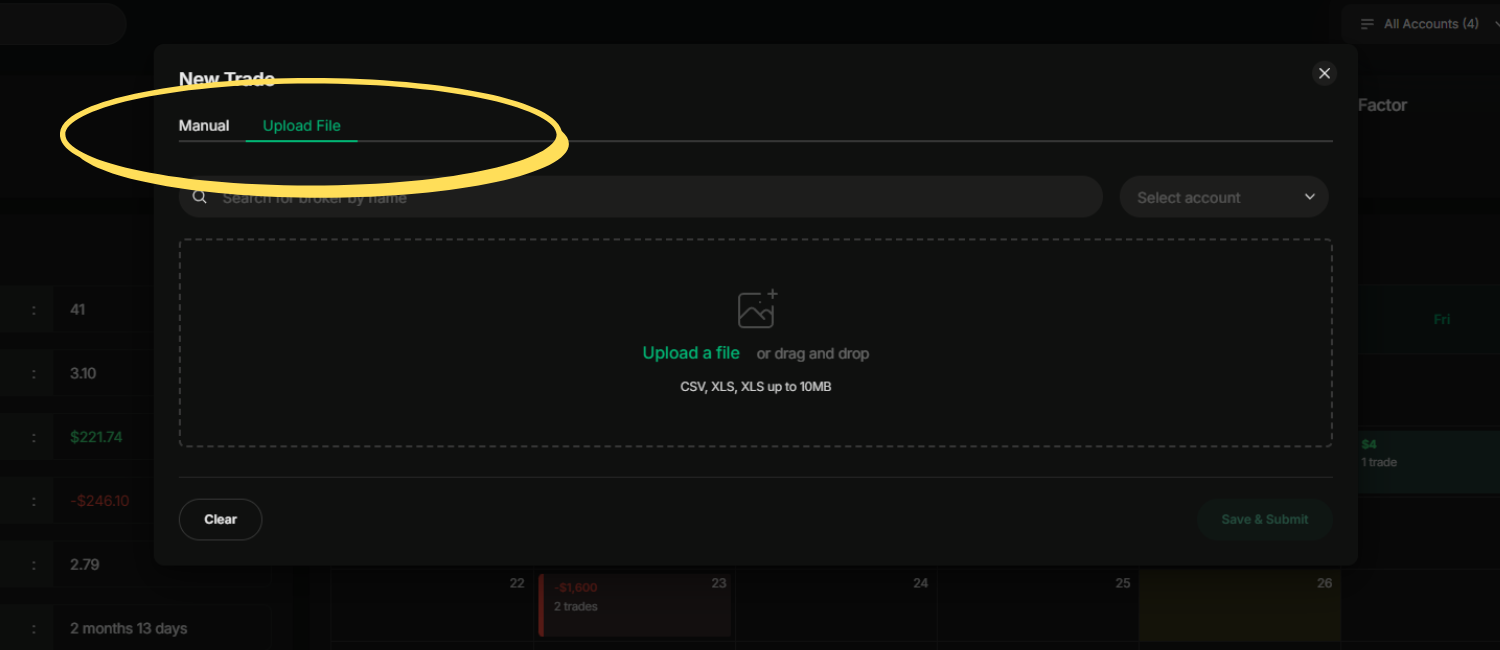
Step 3: Completing the Import
After you’ve selected your broker, chosen your account, and uploaded your trade file, you’re ready to finalize the process. Just hit the ‘Save & Submit’ button located in the bottom right corner of the window.
Keep in mind, the ‘Save & Submit’ button will only be clickable once all the necessary fields (broker, account, and file) are filled out. If anything is missing, the button will stay disabled—so double-check everything before hitting submit!

Can I Import Statements from PaperMoney?
Yes, you absolutely can import your trade history from thinkorswim’s PaperMoney platform into TraderLog! However, there are a few quirks you’ll want to be aware of.
PaperMoney doesn’t always accurately identify opening and closing transactions in certain situations—something the live platform usually handles without a hitch. For example, let’s say you bought 5 shares of XYZ stock and then later decided to reverse your position by selling 10 shares of XYZ. On the live thinkorswim platform, it automatically knows to break this into two separate actions: selling 5 shares to close your existing position and selling another 5 shares to open a new short position.
But PaperMoney? Not quite as smart. It will simply label the entire transaction as selling to open 10 shares. This means when you export your PaperMoney transactions, you might need to manually correct some of these entries in your Excel or CSV file before importing them into TraderLog.
Keep in mind, this extra step is only necessary for PaperMoney practice trades. If you’re importing trades from your live thinkorswim account, you won’t need to worry about this at all!
FAQs
1. How often can I import trades?
You can import trades as often as you’d like. There’s no limit to how frequently you upload new trade files into TraderLog.
2. Can I import trades from multiple brokers?
Yes, TraderLog supports multiple brokers, and you can import trades from different accounts into the same platform.
3. What file formats are supported for import?
TraderLog supports both CSV and Excel (XLS/XLSX) file formats for trade imports.
4. Can I edit imported trades after submission?
Yes, once your trades are imported, you can edit the trade details within the platform to make any necessary adjustments.

